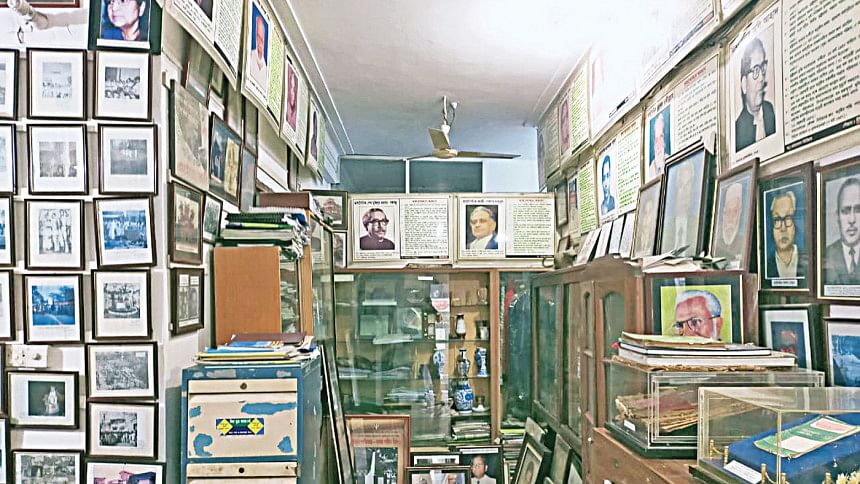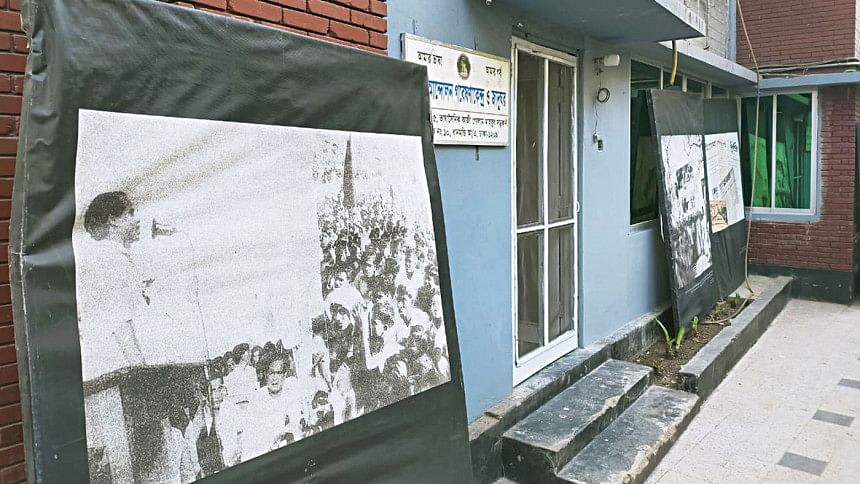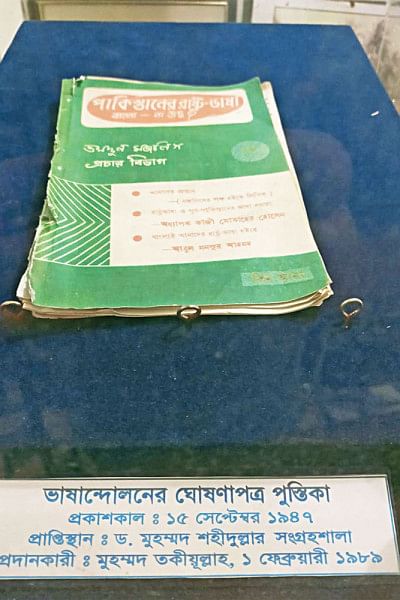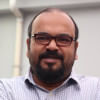A decade’s history hidden in plain sight

The walls are stacked with rare photographs of the Language Movement, as are shelves with books; some have become a bit dusty, but no less significant for it.
It's a small room filled to the brim with documents, paper clippings and memorabilia, transporting anyone that walks in to a time defined by courage, patriotism and love for Bangla.

This place -- two rooms inside a house -- is a museum, called Bhasha Andolan Gabeshana Kendra O Jadughar (Language Movement research centre and museum).

This little-known museum sits at House 5 on Road 10 in Dhanmondi residential area.
Founded by late Kazi Golam Mahboob, a language hero and convener of Rashtro Bhasa Sangram Parishad, it was set up in 2006.
After his demise, his family has been maintaining it through a trust, chaired by Mahboob's wife Peari Mahboob.
This newspaper visited the museum earlier this week.
Walking through the two rooms, some 30 photographs -- donated mostly by language veterans like Mohammad Taquillah, Mohammad Amanul Haque and Prof Rafiqul Islam -- take one on a journey of the Language Movement spanning nearly a decade, from 1947 to 1956.
Visitors also get a chance to look at books, pamphlets, journals and newspaper clippings during the movement, to relive the tumultuous times captured by Taquillah during February 21, 1952.
There is also a visual journey, through images captured by photojournalist Amanul Haque of protesters who brought out a procession near Dhaka Medical College, violating curfew on that fateful day.
These and many other pieces of footagewere donated by witnesses and participants of the movement to the museum, and constitute the history of the Language Movement that is fast fading from collective memory, said Lipi Mahbub, in charge of the museum.
"That's why it's important to preserve these," she said.
This museum and research centre used to be maintained by MR Mahbub, its director, who had collected many of the precious memorabilia from all across the country and had written numerous books on the Language Movement and its heroes, added Lipi.
Since Mahbub passed away last year, his wife Lipi is looking after it.
She said they also have portraits and biographies of some thirty Language Movement veterans, political and student leaders, and intellectuals who played key roles in the movement.
Besides, this correspondent saw original copies of newspapers including Saptahik Sainik -- considered the voice of the movement at that time, rare unpublished photographs, pamphlets and manuscripts.
During his visit, this correspondent also met private university student Moni Akter, who was writing a paper on Ekushey February, and her friend.
She said she was searching for museums or research centres on Ekushey and heard about it.
"As soon as I walked in I could tell this place is important. It should be preserved properly. We only remember Ekushey when February comes but we need to do more than that," said the master's student.
One could tell this private initiative to preserve and spread the history of the Language Movement needs support, as it becomes evident while talking to Peari Mahboob, widow of the language hero.
Age has taken its toll on her, but it could not diminish her will to carry on. The spirit of Ekushey continues to shine bright in her eyes.
Peari spoke extensively of how her husband wanted to preserve the memory of a generation that stood up for their rights, how he painstakingly collected the memorabilia or carried out the research work and most importantly the importance of continuing the good work.
A state-run, large-scale museum on the Language Movement, like the Liberation War Museum, is necessary for the new generation to learn more about the movement and to preserve these rare memorabilia that paint a vivid portrait of a remarkable generation, said Peari Mahboob and Lipi Mahbub in unison.
The spirit of Ekushey, like the spirit of the Liberation War is one of the finest and proudest moments in our history, when we came together as a people to stand firm for our beliefs.
In many ways, Language Movement was precursor to the War of Liberation and in that, we owe the martyrs respect and reverence for eternity.
As this correspondent left the museum premises and walked along the road, renamed after Kazi Golam Mahboob in 2006, he couldn't help but think that a large-scale museum for the Language Movement, like Peari Mahboob and Lipi Mahbub hoped for, could be an apt step towards that direction.

 For all latest news, follow The Daily Star's Google News channel.
For all latest news, follow The Daily Star's Google News channel. 



Comments